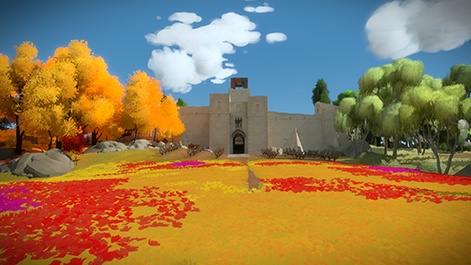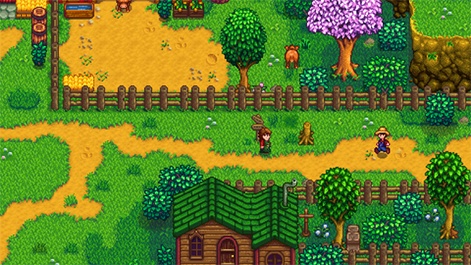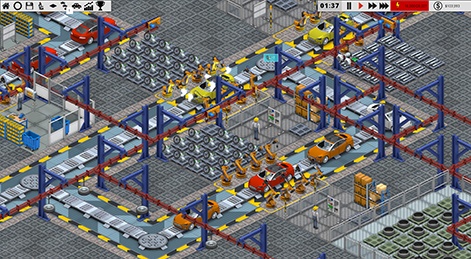Earlier this week, the founder of SteamSpy Sergey Galyonkin published some research into the pricing of indie games on Steam.
He found that the average indie game sold for $8.72, with that figure dropping to $4.63 during the aggressive price cuts of Steam Sales.
His conclusion: that indie developers – whose games, he says, shift on average 21,000 units – are selling themselves short, and should be charging more.
Pricing for anything is always a concern; charge too much and you could hamper sales, charge too little and you may sell more but make less.
So are indie games being sold for too low a price on Steam?
“While I agree the price of indie games is skewing more often in the ‘too low’ category, this is also a reality of the market in which they exist, and they cannot ignore the fact that the price will be seen in the context, with other games' prices compared by the players,” Ico Partners’ Thomas Bidaux says.
“As much as I would like to see games set a higher price, I know most indie studios feel like they only have one shot at launching their game, and they tend to prefer to be a bit too low than a bit too high.”
Positech's Cliff Harris adds: “In general no. There are some outliers though. Factorio is underpriced, in my opinion, some similar games are overpriced, but they are unusual. Most indie games are being sold at a price that is unsustainable in terms of earning a living for the developer.”

One of the concerns of selling games on Steam is that platform’s infamous sales, which see the price of games massively reduced. Galyonkin's research shows that games roughly halve in value during these price cut events: something that developers surely must take into consideration when pricing their game originally.
“We look at the prices of similar releases, think about how many hours players will get out of it, and think about the amount of money we would pay for it as players, debate about it a lot, and then we pick the highest price we feel comfortable with,” Molly Carroll, marketing manager at Starbound firm Chucklefish says.
“Using Starbound as an example, lots of players have gotten hundreds or even over a thousand hours out of it, but would they have given it a chance at all if it had launched in Early Access at $19.99 instead of $14.99? We felt reasonably confident that we could get away with $14.99, so that's what we went with.”
Harris adds: “I have to admit I'm trying to move away from a reliance on heavy discounts, as it's just so unpredictable, and also helps drive a race to the bottom. I'm trying to get a sustainable model going where the price for my current game feels like a pretty good deal, and then keep it pretty much there. I don't see much point in ever discounting a game beyond 75 per cent, even years after release. The difference in sales between 75 per cent and 90 per cent is negligible.”
Ripstone’s head of PR and marketing Michelle Turner says that even with Steam Sales, developers face the same problems are with regular pricing.
“We bear Steam sales in mind when setting pricing, but knowing that everyone will be cutting their price during a sale so you're still facing the same challenge of how to make your game stand out in such a busy market,” she says.

One of the assertions I have heard from indie developers is that they feel they cannot charge more because they are generally releasing inherently smaller projects.
“That's nonsense,” Harris says.
“Harry Potter was written by one person. The idea that throwing bodies at a game makes it better is easily disproved. I've played enough triple-A games to realise this. Everyone knows Introversion has a smaller team than DICE, it doesn't mean that it should have a proportionately lower price than Battlefield 1. Are gig tickets set by how many people in the band? Of course not.”
Chucklefish’s Carroll says there is some weight to the notion that consumers feel that indie developers should charge less.
“At Chucklefish I've worked exclusively with pixel art games, and there's definitely a perception that you can't charge as much for a pixel art game as you would a game with high-res or 3D graphics, which is a shame,” she says.
“It seems like kind of an odd factor in determining the value of something, to me. There's a fear that charging more than average for an indie game will lead to the game not selling at all, and who wants to take that sort of risk after putting so much of themselves into something? And I think developers hear that the 'Under $10' section of the Steam Store is the most profitable, and decide that's the safest route to take. And that's totally valid.
“But maybe in a store that's now flooded with games that are under $10, a confident $25 indie game with pixel art graphics has a better chance of standing out. But does that translate into sales? I'm not sure.”
Ico's Bidaux adds: “That’s a very common thought process that implies that cost has a bearing on price. This is a mistake and misunderstanding on how the market and the audience operate. The price is a reflection of how much the experience is valued. A game that is seen as highly entertaining can afford a high price, within the limits of its niche and the prices of comparable games/experiences.
“The cost thought process is backward and limit the potential of a game's revenues. It either focuses on the need to break even, rather than the need to make profits, or it overestimate the general audience understanding of costs.
Turner adds: “It's an understandable viewpoint but it needs to be turned on its head. Developers shouldn't think about this with purely negative connotations, they should take it as a positive and see that they actually have the option to price games lower – making it more accessible to the masses – whereas big triple-A studios don't always have the option to price their games below £49.99 due to enormous development costs. Indie developers are in a position to make a decision about pricing based on content, quality and where they believe their game will stand alongside competitors on the marketplace, including other indies and triple-A studios. At Ripstone, we feel confident that we are able to charge a higher price if appropriate, regardless of how many people it took to make the game.

In his article, Sergey also argues that launch discounts don’t make sense as developers are not charging their most loyal fans enough.
“Valve has an astonishing amount of data on hand about this kind of thing - and I mean an ASTONISHING amount of hard, actual facts, data,” Dan Marshall of Size Five Games says.
“If Valve recommends a launch discount, I'll take that over someone's guesswork any day. I'd guess Launch Discounts get the game further up the New/Trending charts, so get more games in peoples' hands, and more recommendations through word of mouth. I think that's right, and so I think launch discounts are ultimately a blessing sales-wise.”
Bidaux adds: “Launch discounts have become a tradition on Steam. It is hard to go against the grain in those circumstances. I don't feel that studios are well armed to change this - it would be better for Valve to step in and change its best practice on this. The confirmation bias at this stage will be hard to overcome. It is also in line with the expectations of very regular sales happening on the platform. the systemic approach is hurting many games, with players now being very well trained in waiting for the sales to happen before considering buying certain games.”
But Positech's Harris says that launch discounts are something he’s moving away from.
“I didn't have a launch discount for Production Line and, in fact, it has never been discounted,” he says.
“Launch discounts might work if there is less hype about a game, but really you should aim to release a game people are already excited about at launch.”

So, in conclusion, what should indie developers on the verge of releasing their game onto Steam do when it comes to pricing?
“I’d say you can always go down, but you can never go up,” Marshall says.
“So: price your game reasonably based on scope up to that $20 sweet spot, because it'll make sales more attractive and if it sells badly you can always think of reducing the price. You can't really get away with selling a game for a tenner and then when it gets more traction than you expected, go 'no wait, £20'.".
Carroll adds: “It's important to consider future discount pricing when deciding on the launch price of your game, but also, don't feel pressured into discounting too much too quickly, and don't feel like you need to participate in every discount on every storefront just because they've asked you to.
“Starbound has been around for nearly four years, and has never been more than 33 per cent off. It's $14.99 usually, so 33 per cent off puts the game at an impulse-buy-friendly $9.99. We're sometimes encouraged to go lower, but we still seeing really satisfying sales spikes at 33 per cent so we've been holding off until it feels like the right time. We also frequently turn down requests to put Starbound on sale when the timing doesn't work for us.”

Ico’s Bidaux says that try and gauge the perception of your game, even using industry friends to help out.
“This is something I approach incredibly cautiously as many games are very different in how the pricing strategy needs to be implemented,” he says.
“My main advice is to really look at the game as it is going to be perceived by the audience and to price it according to that perception rather than based on the costs to make the game, especially if it means increasing the price initially considered.
“I also would advise developers talk about the price prior to making a final discussion. Of course, this is a complex topic to bring to your community, but you can also discuss it with fellow developers, partners you are working with, journalists that you are friendly with. It is easy to become nearsighted when that topic is concerned.”
















